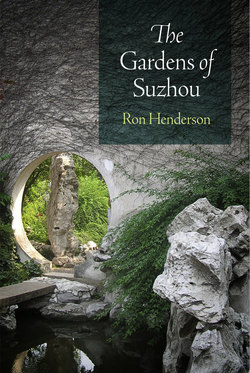Читать книгу The Gardens of Suzhou - Ron Henderson - Страница 9
На сайте Литреса книга снята с продажи.
ОглавлениеVISITING THE GARDENS
A GUEST IN THE GARDEN
The gardens were built with the intent of providing pleasure to the family and invited guests. When you now visit the garden, do so as if you are an invited guest. You should enter the gate and proceed to the reception hall or main hall of the residence as this is where you would have been greeted by the owner. In almost every garden, a discreet passage from this hall leads out into the garden proper. Taking this path is an effective way to understand the spatial and experiential sequence of the gardens from a visitor’s point of view.
GARDEN ETIQUETTE AND ATTIRE
The experience of these gardens by tourists is much different than the experiences of the families who lived here. It is impossible to savor the awakening quiet of a morning sunrise or the festive celebrations with friends and families that were routine for the residents of the gardens. Nevertheless, it is possible to see and stroll through the same spatial structure which has endured for generations.
The gardens are endangered by the crush of tourists, and it is my hope that timed entrance will soon regulate the flow of visitors to help preserve the gardens and allow an enjoyable experience. Unfortunately, tour guides with amplified microphones can turn a tranquil visit into a frustrating one. On many occasions, I have gone through the gardens not at my own pace but trying to stay ahead of or fleeing the loud guides. I strongly hope that amplified microphones will soon be banned from these gardens.
There is a saying about Suzhou gardens, “Everything is green—except that little bit of red.” This is good advice for attire in the gardens. Brightly colored clothing, although common among the former residents of these gardens, is a distraction now that they are filled with hundreds of visitors.
PAUSE AND OBSERVE
Listed with each garden are places to pause and observe. This is a plea to the garden visitor to stop for several minutes to allow the garden to “come to them.” The places that I have included are intended to emphasize a historical point of view in the garden or are places of personal interest. These are merely suggestions and each visitor should discover his or her own meaningful places in the garden.
The inspiration for this component of the book comes from Chen Congzhou, the respected Chinese garden historian, who writes about two ways of experiencing the gardens in his book On Chinese Gardens:
Chinese gardens may be divided into two kinds: “in-position viewing” i.e. lingering observation from fixed angles, and those for “inmotion viewing” i.e. moving observation from changing angles. This must be the first and foremost consideration before constructing a garden. The former means that there are more visual points of interest to appreciate from fixed angles, while the latter demands a longer “touring” vista.
In small-scale gardens, the former type should be predominant and the latter secondary and the reverse should be the case in large-scale gardens. An example of the former type is Wangshi Yuan [Master of the Nets Garden], and of the latter Zhuozheng Yuan [Humble Administrator’s Garden]. In Wangshi Yuan, you will discover many buildings in which you would love to sit and linger awhile. You can make a tour of the pond, you can stand by the balustrade and count the swimming fish, or you can seat yourself in the pavilion to wait for the moon and greet the breeze. Outside the veranda the shadows of flowers move along the walls, and looking out through a window there are ridges and peaks like those in a painting. The serenity of the scene is enchanting. In Zhuozheng Yuan, paths wind around a pond, and long corridors draw visitors ahead. The pond looks like a miniature West Lake, where “gaily-decorated pleasure boats glide to and fro under the bridge at midday and visitors can catch glimpses of scented garments.”The view changes with every step.
Figure 1. Close observation of blossoms at Guyi Yuan, Nanxiang.
Below is a list of pause and observe topics along with the gardens in which I emphasize that particular element. In some instances, the topic coincides with an aspect of a garden that is recognized as being exemplary. In other instances, I have paired topics with gardens based on my personal experience. For instance, I remember a particularly vivid sunset washing across the walls of the Crane Garden and have included that topic with that garden, although the sunset washing across the high white walls of Suzhou is certainly visible in many of the other gardens.
GARDENS
| borrowed scenery | Garden of the Peaceful Mind (Jichang Yuan) |
| white walls | Crane Garden (He Yuan) |
| courtyards | Surging Wave Pavilion (Canglang Ting) |
| ponds | Garden of Retreat and Reflection (Tuisi Yuan) |
| streams | Garden of Peace and Comfort (Yu Yuan) |
| rock specimens | Lingering Garden (Liu Yuan) |
| rockeries | Mountain Villa of Secluded Beauty (Huanxiu Shanzhuang) |
| stone masonry | Mountain Villa of Embracing Emerald (Yongcui Shanzhuang) |
ARCHITECTURE
| halls | Master of the Nets Garden (Wangshi Yuan) |
| pavilions | Garden of Cultivation (Yi Pu) |
| garden corridors | Carefree Garden (Chang Yuan) |
| garden windows | Garden of Harmony (Yi Yuan) |
PLANTS
| trees | Lion Grove (Shizilin) |
| blossoms | Garden of Ancient Splendor (Guyi Yuan) |
POETRY AND PAINTING
| painting | Humble Administrator’s Garden (Zhuozheng Yuan) |
| poetic couplets | Couple’s Garden (Ou Yuan) |
| novels | Zigzag Garden (Qu Yuan) |
